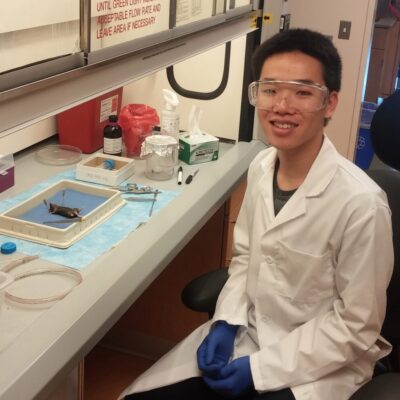Elliott Chien Rose Hills
Interleukin-33 expression by astrocytes in response to neuronal activity
Astrocytes, the star-shaped glial cells of the central nervous system, are necessary for synapse formation, which makes the role of astrocytes in brain development particularly interesting as autism and schizophrenia are fundamentally diseases of circuit and synapse formation. Molecular communication between astrocytes and microglia, a second type of glial cell, is an emerging mechanism explaining synapse development and pruning in the central nervous system. Previous work in the lab has found that astrocytes secrete an immune signaling molecule called Interleukin-33 (IL-33) during brain development, and that this molecule acts as a signal to microglia to remove unwanted synapses through a process called pruning. Using mice as a model, I will test the hypothesis that astrocytes respond to the activity of neurons to regulate synapse pruning by increasing expression of IL-33. I will study this question by examining the visual and the sensorimotor nuclei in the thalamus, which receive input from the eyes and whiskers, respectively. I will dark rear the mice and pluck whiskers as forms of deprivation of sensory signals to study the effects on IL-33 expression in these regions of the brain. This project opens up exciting possibilities for future work, including insights into the role of the immune system in normal brain development and in brain disorders.
Message To Sponsor
I wish to express my gratitude to the Rose Hills Foundation for providing me with this opportunity to engage in research full-time. Through SURF, I am able to immerse myself within a field that I am passionate about and pursue answers to truly exciting questions. Working in the Molofsky lab has been extremely helpful in developing an analytical mindset as well as providing practical supplements to the material learned through coursework. Hopefully, this project will be a stepping stone towards my greater goal of contributing to a better understanding of psychiatric and neurodevelopmental disorders.